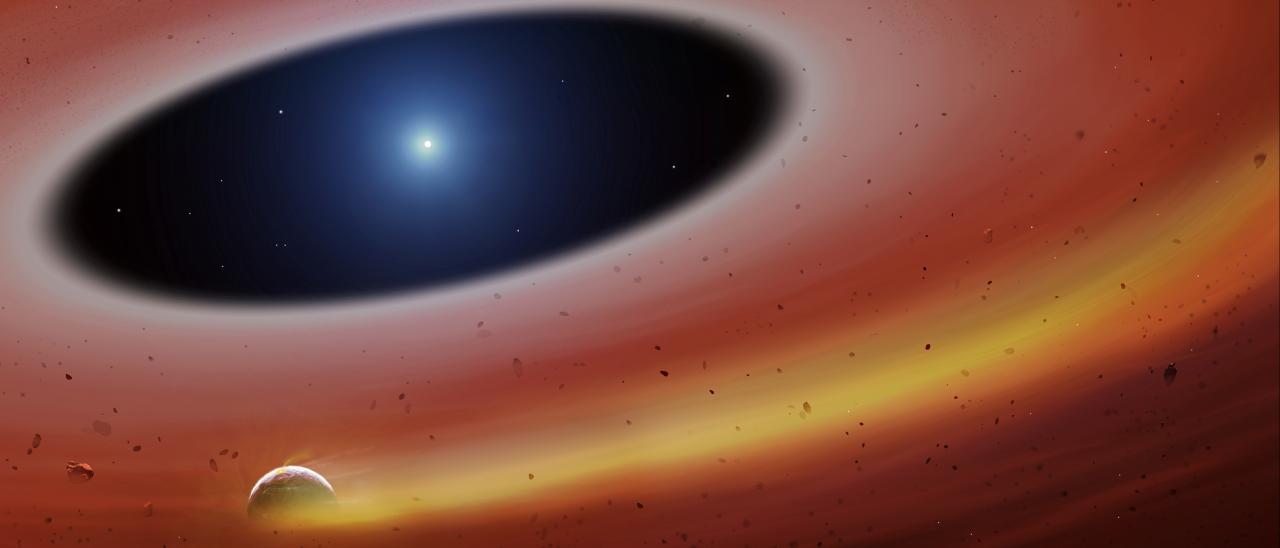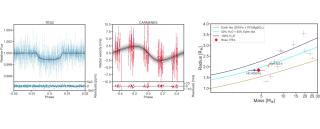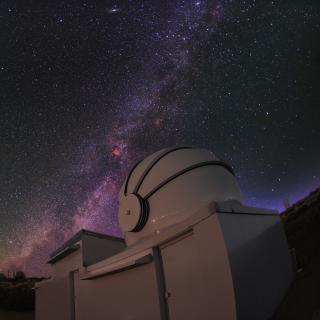Numerous exoplanets have been detected around Sun-like stars. These stars end their lives as white dwarfs, which should inherit any surviving planetary systems. In fact, many white dwarf stars show signs of having accreted smaller bodies, implying that they may host planetary systems. A small number of these systems contain gaseous debris discs, visible through emission lines. Here, we report a stable 123.4-minute periodic variation in the strength and shape of the Ca II emission line profiles originating from the debris disc around the white dwarf SDSS J122859.93+104032.9. We used numerical simulations to show that the most likely explanation for the short-period signal is a low-mass planet orbiting within the disc. The planet must be unusually small and dense to avoid being ripped apart by tidal forces, being so close to the white dwarf as it is. We speculate that it may be the leftover core of a planet whose outer layers have been removed.
Artist’s impression of a planetary fragment orbits the star SDSS J122859.93+104032.9, leaving a trail of gas in its wake. Credit: University of Warwick/Mark Garlick.
Advertised on
Authors
C. J. Manser
B. T. Gänsicke
S. Eggl
M. Hollands
J. D. Landstreet
W. Lyra
T. R. Marsh
F. Meru
A. J. Mustill
Pablo
Rodríguez Gil
et al.
References



